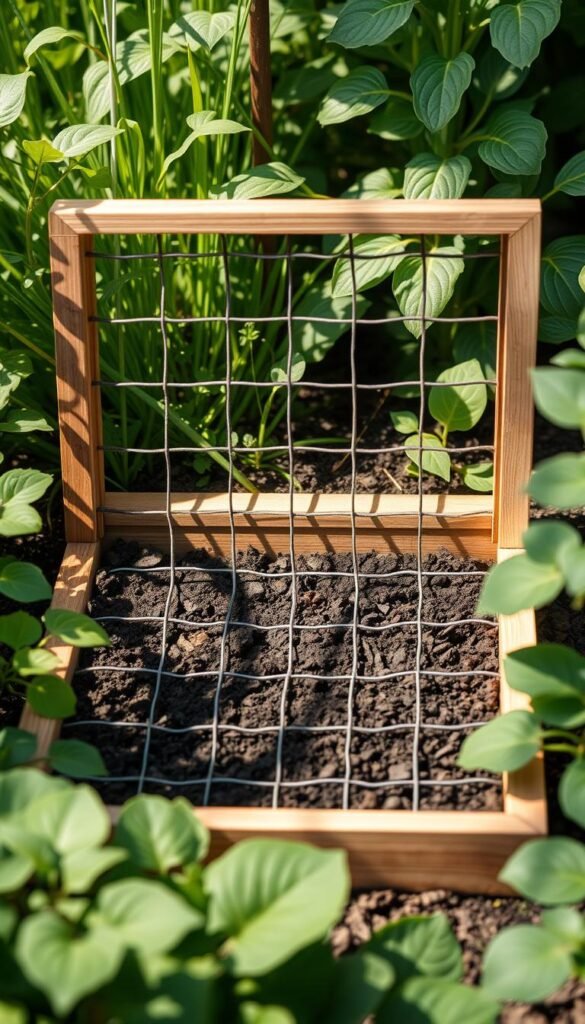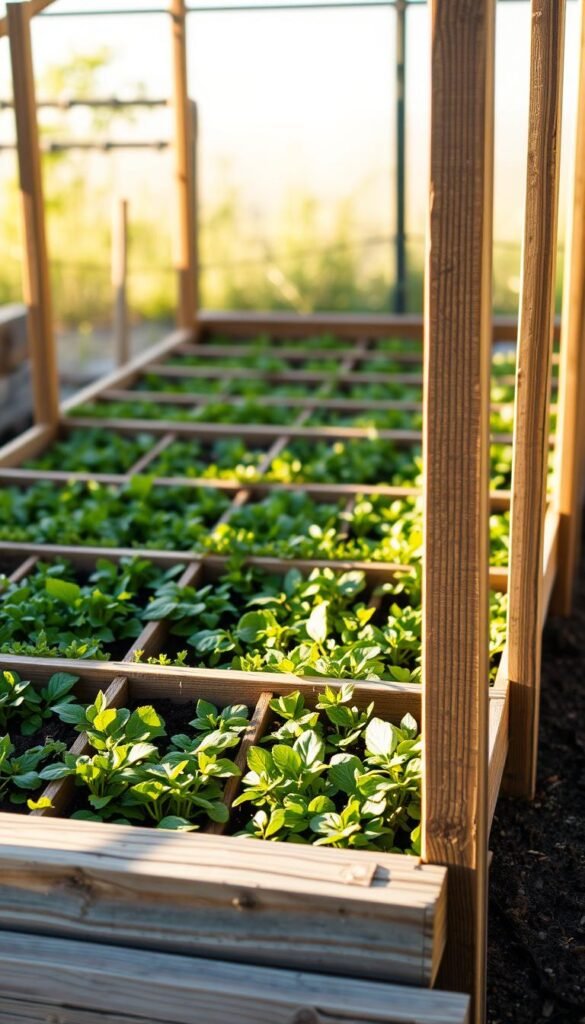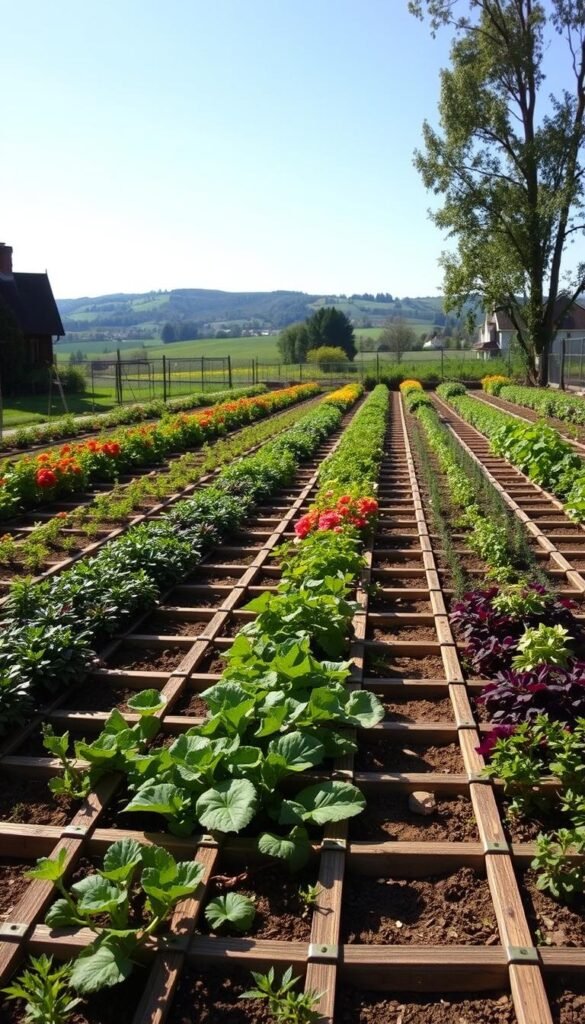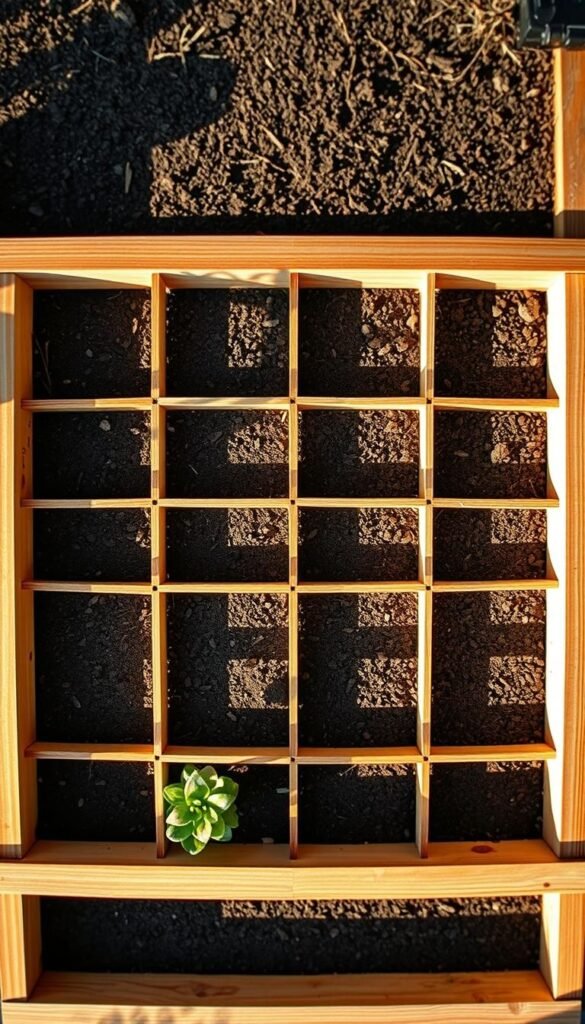Square foot gardening transforms small spaces into productive growing zones. Early enthusiasts often used basic string grids, but modern gardeners lean toward long-lasting materials like wood or recycled plastics. This shift ensures your planting areas stay organized season after season.
Why choose rigid grids over floppy strings? Experienced growers report fewer weeds, better spacing accuracy, and easier crop rotation. One urban gardener shared how her cedar grid lasted five years without warping – even through harsh Midwest winters.
Structured layouts simplify maintenance while maximizing yields. You’ll spend less time replanting and more time enjoying fresh harvests. The method works particularly well for raised beds, patios, or balcony setups where space matters most.
Durable designs also protect delicate roots from accidental trampling. Many kits now include UV-resistant markers and rust-proof connectors, blending practicality with visual appeal. Whether growing herbs or heirloom tomatoes, a reliable framework keeps your green space thriving.
Embracing Square Foot Gardening: An Introduction

Imagine turning a 4×4 foot space into a lush oasis of vegetables and flowers. This gardening method revolutionizes small-scale growing by dividing beds into precise sections. Unlike traditional rows, it uses visual boundaries to prevent overcrowding and boost yields.
What Makes Square Foot Gardening Unique
The secret lies in its grid system. Each square becomes a mini-garden, letting you grow multiple plants without chaos. Research shows gardens using foot intervals produce 30% more than conventional setups. You control soil quality and water use while reducing weeds naturally.
Benefits for Small Spaces and Easy Maintenance
Urban growers love how raised beds with grids fit patios or balconies. A study comparing methods found grid users spent 45% less time weeding. The table below shows why this approach wins:
| Feature | Traditional Gardening | Square Foot Method |
|---|---|---|
| Space Efficiency | 40% usable | 90%+ usable |
| Weed Growth | High | Low |
| Water Usage | Moderate | Precise |
| Crop Rotation | Complex | Simplified |
Starting your gardening grid early ensures proper spacing for roots and sunlight. Many find it easier to track plant health when each section has defined borders. Give those seedlings room to thrive!
How to Make a Simple Grid for Your Square Foot Garden

Building a structured layout starts with gathering the right supplies. Modern grids require durable components that withstand weather and frequent use. Choose materials that balance longevity with ease of installation for seasons of hassle-free gardening.
Materials and Tools You’ll Need
Begin with a tape measure, marking paint, and sturdy stakes. Bamboo poles or PVC trim work best for creating crisp lines. You’ll also need zip ties or rust-resistant screws to secure intersections. Quality soil matters – nutrient-rich blends in raised beds reduce weeds and support root health. For precise space division, follow planning guidelines to mark each square accurately.
Comparing Bamboo, PVC, and Other Options
Each material suits different needs. Bamboo offers eco-friendliness but may rot in damp climates. PVC lasts decades but lacks natural appeal. Traditional string grids fade quickly, while wood requires regular sealing. See how options stack up:
| Material | Pros | Cons |
|---|---|---|
| Bamboo | Biodegradable, affordable | Less durable in wet zones |
| PVC | Weatherproof, customizable | Higher initial cost |
| Wood | Natural look, sturdy | Needs maintenance |
| String | Quick setup | Replacement every season |
Match your choice to local conditions. Urban balconies often favor lightweight PVC, while backyard beds thrive with rot-resistant cedar. Proper step-by-step measurements ensure even spacing, whether you’re growing carrots or kale.
Step-by-Step Instructions for Building Your Garden Grid

Creating an organized garden grid starts with precise planning. Follow these methods to build a framework that lasts years while saving time during planting seasons. You’ll need basic tools like a measuring tape and durable connectors – let’s break it down.
Planning Your Grid Layout and Measurements
Mark your bed’s edges using stakes and string. Measure 1-foot intervals along each side, creating perfect squares. Many gardening books recommend using chalk lines for temporary guides. For portable grids, cut materials 2 inches shorter than your bed’s width.
- Double-check measurements to avoid uneven spacing
- Label sections with UV-resistant markers
- Adjust layouts based on seasonal needs
Laying Out and Securing the Stakes
Position vertical stakes every 12 inches, then attach horizontal pieces. Use rust-proof zip ties for tight connections that withstand wind and rain. Bury stakes 3 inches deep in compost-rich soil for stability. This way, your grid stays put through multiple growing years.
Test the structure by gently tugging intersections. Reinforce wobbly joints with extra ties or screws. Seasoned growers suggest checking tightness each year during spring prep time. With proper care, your setup becomes a time-saving partner for endless harvests.
Wrapping Up Your Square Foot Garden Project
Your organized garden begins with a sturdy framework that simplifies care for seasons. Durable grids made from wood or PVC keep squares intact while resisting weather damage. Follow the classic formula from expert guides: one plant type per square ensures balance without overcrowding.
Regular weeding becomes effortless with clear boundaries between crops. Use your hand tools to spot invaders early – a quick weekly check maintains order. Rotate crops yearly using numbered posts as guides, preserving soil health naturally.
When storing grids, clean them gently and stack in a dry shed. Wood frames last longer when oiled before winter, while PVC sections snap apart for compact storage. This system’s flexibility lets you redesign squares each spring without rebuilding.
By mastering this formula, you’ll spend less time battling weeding and more enjoying harvests. Those rust-proof posts and hand-friendly layouts turn chores into joyful routines. Now watch your garden thrive – one perfectly planned square at a time!






